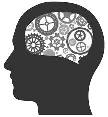Artificial Intelligence
AI is the software that enables computers to provide people with the help they need at work and in their everyday lives: finding faces in photographs, recommending music, diagnosing diseases, fighting poverty by pinpointing the regions most in need, and using agricultural robots to grow new varieties of sorghum, for example.
What’s common to all these applications is that they use information from many sources, often gathered live in real time, they detect patterns, and they decide what’s the best answer or course of action to take. Very often, they also predict what the outcome will be and, by comparing their predictions with what actually did ensue, they improve their performance in the future. In this way, AI ensures these actions, decisions, and advice are effective and meet the needs of the people it serves.
To gather information, AI-enabled systems sense: robots see, hear, touch and feel. AI-enabled systems learn and adapt, either on their own or with some guidance from people. They reason and explain. Most importantly, AI-enabled systems anticipate. They anticipate your needs. They anticipate the need to take action. They predict the outcome of their actions.
AI makes it possible for robots and computer systems to interact with humans, on human terms. Safely. AI feeds on complexity and protects you from having to deal with it. And AI is as autonomous are you need it to be. AI-enabled devices can work on their own or they can collaborate with people, with people taking charge when they want to.
So, what makes all this possible? Sixty years of progress in computer vision, human-computer interaction, machine learning, natural language processing, and robotics, much of it pioneered at CMU. KCRC continues this tradition of cutting-edge research, developing and deploying AI in the service of people in Africa.
Carnegie Mellon University Africa Campus | Kigali Innovation City | Kigali | Rwanda | Email: info@kcrc.rw | Phone: (+250)788125066
For inquiries about website accessibility or related issues contact us on webmaster@kcrc.rw
Copyright © 2023, KCRC


